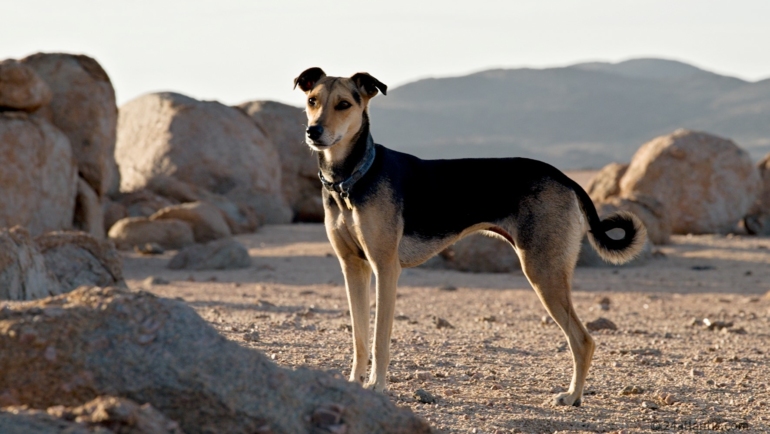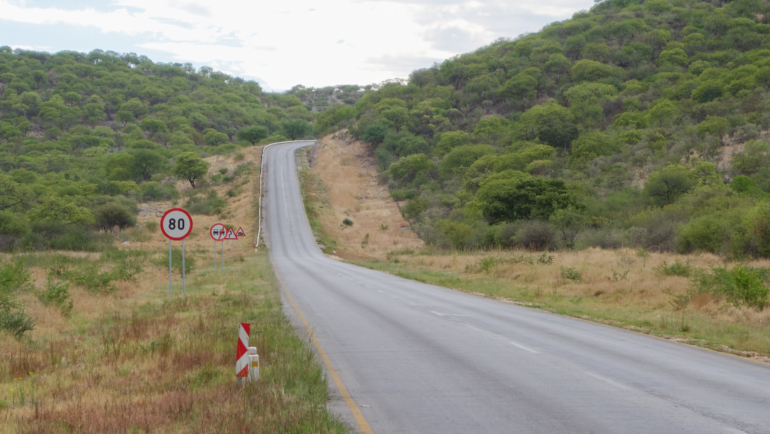One of Namibia’s most prominent bridges is the wrought-iron Avis railway bridge under which every visitor arriving from the airport must pass on his way to the city centre. Although the bridge may go unnoticed by the 21st-century traveller, in the 1920s the building of the railway from Windhoek to Gobabis and the construction of the Avis bridge on the outskirts of the city were milestone events.
Up until then the journey to the eastern reaches of the country included an arduous 20km section undertaken by ox-wagons over the Auas Mountains and across the Klein Windhoek River. The terrain was so challenging that the oxen needed to outspan, quench their thirst and rest at the Kapps Farm before they could continue with their journey. Also referred to as an ‘ox-wagon hotel’, the hotel at the Kapps Farm provided accommodation to the touleiers (team leaders), as did the next stop at Seeis further along the route. The hotels were dotted along the ox-wagon routes, a day apart from each other, providing rest and replenishment for both human and animal after the long day’s journey.
Linking east to west
The construction of the first 27km of railway line from Windhoek to Kapps Farm began on the 24th August 1921. The steel sub-structures for the 92.98-metre bridge over the Klein Windhoek River were brought in from Cape Town and assembled on site, supported by four concrete pillars. The bridge was completed in 1922, making it a hundred years old this year. It formed an important section of the Windhoek to Gobabis railway line that was built by the South African Railway (SAR), linking the cattle-rich farming area of the east to the interior, and from there to South Africa. The railway line was completed in 1929 and the infrastructure – buildings and water points – were completed over the following year. The official opening took place on 6 November 1930.
Bridges – Changing the course of history
Worldwide, bridges and – later on – railway lines changed the course of history, facilitating passage through difficult terrain and allowing for trade, industry and travel. Bridges were initially built simply from stepping stones and felled trees. They evolved over time into stone corbel arch bridges, like the one seen on the Mycenaean Arkadiko Bridge in southern Greece dating back to 1300-1190BC, which was designed for chariots; stone and mortar arch bridges, built by the ancient Romans; and iron bridges (the first iron bridge was constructed in Shropshire, England in 1779). And they progressed to riveted iron bridges and welded steel, and, nowadays, mostly steel-reinforced concrete. China has the longest bridge in the world with the Danyang-Kunshan Grand Bridge at 164km long, stretching over the Yangtze River Delta, and the highest bridge with its awe-inspiring Beipanjiang or Duge bridge in southern China sitting 565-metres above the Beipan River.



A new era
And as for the railway, although animal- and man-drawn wheeled vehicles were pulled along grooves in limestone in the 6th century BC in Greece, and horse-powered funiculars and wagonways were in use in mid-16th century Germany, modern rail transport only began in Britain with steam locomotives carrying goods in 1802 and passengers in 1825. Trains and ships allowed access across the continents and over the oceans, heralding a new era for transportation and travel.
And, in Namibia . . .
The first railway line in Namibia was a 21-kilometre track that was constructed in 1895 to transport pelts and guano to awaiting ships at Cape Cross, north of Swakopmund. The outbreak of rinderpest in 1897 had a devastating effect on the oxen and ox-wagon transport, which until then had been the country’s main means of transport. It motivated the construction of the railway line from Swakopmund to Windhoek, which reached Windhoek in 1902. From 1905 to 1907 the Lüderitz to Keetmanshoop line was constructed during the Nama uprising to convey supplies to troops. Stretch by stretch, the Namibian towns were linked by railways conveying goods and passengers, and bustling stations emerged along the routes.
While many local labourers were involved in the construction of the Namibian railway – including forced labour in the early years, in 1904 there was a shortage of labourers and Europeans (mostly Italians) were brought in as the work force. Upon commencement of their contracts, they found that the working conditions were harsh and the payment considerably less than they were promised, triggering the first railway strikes. During the depression years in the 1920s work on the railway was offered to ‘blanken’ – whites – (as seen in the 1921 newspaper advert), who were agreeable to work with pick and shovel, in a job-creation initiative. More than a hundred years after the first railway track was laid in the coastal desert at Cape Cross, there is now almost 3000km of railway track running through Namibia, linked by bridges, of which the iconic Avis is one of the more noteworthy.
Today, the steam trains of the bygone era have been replaced by diesel locomotives. And as for the Avis railway bridge, there is little traffic, only a train that occasionally travels along it, conveying fuel to the airport. More often, it is occupied by a troop of baboons relaxing along its struts, enjoying the vantage point, or it is used as an interesting photo backdrop by honeymoon couples and photography groups.
It doesn’t take much, however, to take a leap of the imagination into the previous century when steam trains were busily transporting goods along the line. The Avis railway bridge still stands proudly spanning the Klein Windhoek River, as if cognisant of the important part it once played in Namibian history.










.png)

SUBMIT YOUR COMMENT